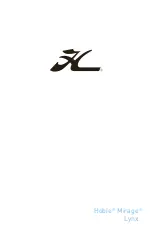
Copyright © 2012 By Farrier Marine Page 34
FARRIER MARINE
strut brackets, and just inboard from the float. Even if no
damage is found, continue to monitor for cracks over a
period of time.
A particular area to check for delamination on F-31s,
after a fore and aft collision, is the forward Beam Bulkhead
to hull taping around the hull brackets and down into the
hull.
This is a known collision failure point and is due to the
bow diagonal wire brace (F-31 only) directing shock
loads into the forward beam structure, and any cracks in
the Beam Bulkhead to hull area should be investigated
and repaired.
Damage here may not be visible initially, but it may
grow to eventually fail later, so continue to monitor. The
boat still holds together should this tape delaminate, but
obviously sailing should cease until it is repaired.
Such fore and aft collisions on the F-31 also tend to try
and lift up the beam bolt pad - so also check this area in
the beam recess for cracking.
More details on this and other things to watch are in
the Beam Care Bulletin on Farrier Marine's Owners Page
at:
http://www.f-boat.com/owners/index.html
HURRICANE SURVIVAL
Hurricanes frequently cause damage to many boats,
and on one occasion capsized a folded F-27. The owner
had left it on a mooring, and being worried about possible
damage from other boats breaking their moorings nearby
felt it best to fold her up to reduce the 'target' profile.
However this considerably reduces stability, and as
stated earlier, this is limited while folded. As a result, no
doubt while swinging sideways, the gale force winds blew
the F-27 on its side.
The best procedure in such a situation is to get the
boat out of the water, and trailer it inland away from harm
- the perfect solution and used by most owners. If there
is not time for this, then leave the floats extended, and
pump water into each float and the main hull to weigh her
down. Also remove the wing and bow nets. These don't
have much windage, but it is surprising how much it can
be in such winds. Lowering the mast will also reduce
windage. Your boat is then as safe as anything can be in
a hurricane.
SYNTHETIC RIGGING OPTIONS
Ultra low stretch synthetic lines are now acceptable
alternatives for bow pole bobstay, or side lines, instead of
wire. Can also replace the wire diagonal braces as used
on the F-9A/F-31.
Synthetic rigging with deadeyes replacing turnbuck-
les is now also recommended for all rotating masts, and
best current choice appears to be Dynex Dux.
FOLDING ASSISTANCE
Unfolding (extending floats) on the larger designs with
low profile (shorter) beams such as F-32/F-33 can be
easily done by two, but one person may find it difficult.
Unfolding the second side can also be much harder on a
very light boat, as the boat will have heeled towards the
extended float, meaning the folded float will have to be
moved upwards when initially folding. This will improve
for most as the boat is loaded with cruising gear, but
racers kept light will continue to see this problem
To make it easier, a simple 4 : 1 block and tackle, with
a strong shock cord can be used as shown above
between beam end and pad eye in cockpit center to
assist in extending floats by pulling beam end in and
down.
Folding (bringing floats in) is easier and can be done
by one person. However, float will speed up and gain
momentum as it comes into main hull, and may impact
heavily on the stops.
To prevent this happening, rig up tackle and shock
cord at the correct length to start slowing float down from
about half way in. For this, shock cord (relaxed) will need
to be about 400mm/16" long, and tackle about 800mm/
32" long. Mark correct length once known.
F-41 and F-44
The F-41 and F-44 have not received much mention
in this manual, mainly because they handle very similarly
to the trimarans so everything in this manual (other than
folding) also applies to both cats. There have also been
no issues or problems of any note.
Summary of Contents for F-22
Page 42: ......
















































